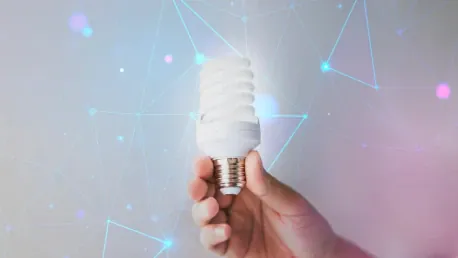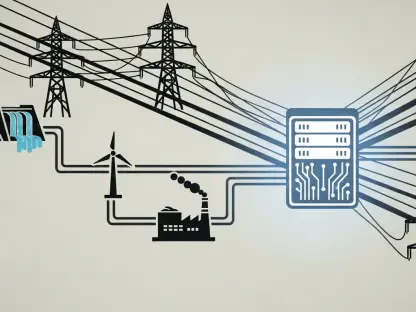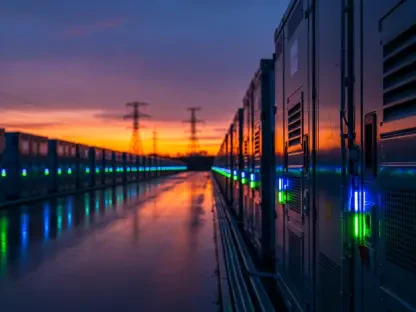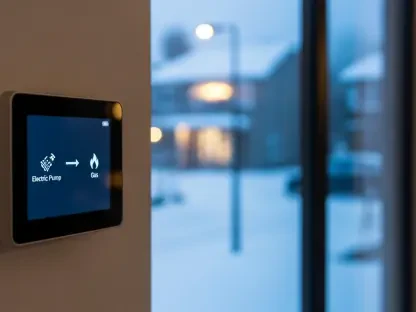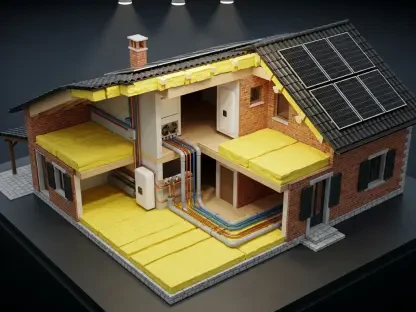The study entitled “Challenges to the Electrification of Homes in the US,” conducted by researchers at Stevens Institute of Technology in New Jersey, explores how the growing trend of home electrification introduces new challenges, especially in the context of power disruptions and resilience. The research is timely and crucial as the move toward electrification accelerates in the battle against climate change. Although electrification is beneficial for reducing greenhouse gas emissions, the researchers emphasize the importance of understanding the associated risks to ensure public safety and effective emergency planning.
The Growing Trend of Home Electrification
Benefits of Electrification
Electrification of homes is a significant step towards reducing greenhouse gas emissions. Fully electrified homes can achieve up to 78 percent reductions in emissions compared to those using mixed fuels. This shift is crucial in the fight against climate change, as it reduces reliance on fossil fuels and promotes cleaner energy sources. The move towards electrification is also supported by the increasing availability of renewable energy technologies, such as solar panels and battery storage systems. These advancements enable households to tap into sustainable energy, thereby reducing their carbon footprint and contributing to a healthier environment.
The push for home electrification comes amid growing awareness of the environmental impact of fossil fuels. As governments and institutions worldwide implement stricter regulations to curb emissions, the adoption of electrically powered homes gains momentum. This trend is especially notable in urban areas where infrastructure for renewable energy sources is more readily available. Moreover, grants and incentives aimed at promoting green energy solutions have spurred continued interest among homeowners to transition to fully electrified systems, further driving the global agenda for sustainability.
Increasing Vulnerabilities
However, the dependence on electrical systems introduces new vulnerabilities, particularly during power outages. The research highlights that fully electrified households are 60% more vulnerable during winter storms compared to mixed-energy homes. This increased vulnerability is due to the lack of alternative energy sources when the electrical grid fails. The study underscores the importance of understanding these risks to ensure public safety and effective emergency planning. The heavy reliance on electricity makes fully electrified homes susceptible to prolonged outages, often leaving occupants without heat, communication, and essential services during critical periods.
The intersection of electrification and climate resilience is complex because although the shift to electric power aims to address long-term climate challenges, it inadvertently creates short-term vulnerabilities. The U.S. power grid, often strained by severe weather events, presents an additional risk. For instance, as seen in recent events, fully electrified homes without adequate backup solutions suffer significant challenges in maintaining livable conditions. Therefore, while electrification targets sustainability, it simultaneously raises urgent questions about how to effectively manage households’ power needs during outages.
Understanding Household Vulnerabilities
AI-Powered Vulnerability Assessment
The researchers developed a vulnerability assessment framework leveraging AI and high-resolution energy data from 129,000 U.S. single-family homes. This two-stage approach identifies household electrification levels with over 80% accuracy and quantifies outage vulnerability using a composite risk index. This index considers electrification profiles, backup capabilities, and climate exposure, providing a comprehensive understanding of household vulnerabilities. By utilizing machine learning models, the team could meticulously analyze and predict the resilience of different households, enabling better preparedness and response strategies.
AI’s role in assessing risk and enhancing resilience capabilities cannot be overstated. The models developed are adept at parsing extensive sets of energy consumption data, recognizing patterns that indicate how homes would fare in the event of power outages. This granular level of information helps predict which areas might face the most significant impact, allowing for the deployment of resources in a more targeted manner. Furthermore, this proactive approach lays the groundwork for potentially mitigating the risks associated with electrified homes, making them safer and more robust against unexpected disruptions.
Case Study Insights
A simulated case study revealed that solar-equipped electrified households displayed enhanced resilience during heat waves due to renewable energy resources. However, these homes were nearly three times more vulnerable during winter outages compared to mixed-energy homes. This finding resonates with the experience of Texas in 2021, where millions lost power during a winter storm. The study highlights the importance of energy diversity and distributed energy resources in mitigating outage vulnerabilities. It became evident that while solar power offers significant advantages in some conditions, it also poses challenges in others, especially when the sun is not readily available to generate energy.
The variability in resilience underscores the necessity for diverse energy portfolios within homes. Solar and wind energy can provide substantial benefits, but without backup sources like battery storage or auxiliary power systems, households remain at risk during periods of low generation. Additionally, the geographic and climatic factors influencing the effectiveness of these systems necessitate tailored approaches to meet local needs. The study reinforces that a one-size-fits-all solution is impractical, urging for nuanced strategies that consider all aspects, from weather patterns to economic feasibility, to bolster household preparedness and safety.
The Role of Distributed Energy Resources
Solar and Battery Storage
Integrating distributed energy resources like solar and battery storage is critical for enhancing household resilience. Solar panels provide a technical solution to maintain essential services during outages, but their effectiveness heavily depends on adaptive behaviors, such as load shifting. The study emphasizes that resilience emerges from the interaction of technical, adaptive, and transformative capacities, and is not defined by a single factor alone. Efficiently implementing these resources requires thoughtful coordination and training for homeowners, ensuring they know how to optimize their energy use during critical periods.
The technological advancements in battery storage have made it possible for homes to store excess power generated on sunny days for use during emergencies. However, the adoption of these technologies faces economic barriers that impede widespread implementation. Policymakers must support incentives that make battery storage more accessible to lower-income households, mitigating the vulnerabilities that come with dependence on a single energy source. By diversifying and enhancing energy resource portfolios, communities can become more resilient and capable of weathering disruptions without significant detriment to their daily lives.
Geographic and Climatic Considerations
The effectiveness of distributed energy resources can vary based on geographic location, climate, and system design. For instance, solar-powered homes demonstrate resilience during summer heat waves but are more vulnerable during winter outages. This variability underscores the need for tailored resilience strategies that consider local conditions and the specific needs of each household. Factors such as regional weather patterns, average sunlight hours, and the robustness of the local power grid all play pivotal roles in determining the efficiency of renewable energy systems. Consequently, one must consider these elements when planning, designing, and implementing energy solutions.
In areas with limited sunlight during winter months, it becomes critical to integrate complementary energy sources, such as wind power or even traditional generators for emergency situations. By understanding the unique attributes of different geographic locations, planners can develop strategies that optimize the use of available resources, ensuring that households are well-prepared for any situation. Such targeted and informed planning can significantly mitigate the risks associated with fully electrified homes, maintaining the balance between achieving sustainability goals and ensuring resilient living conditions.
Socio-Economic Factors in Electrification
Barriers to Adoption
Socio-economic factors play a substantial role in adopting electrification technologies and the vulnerabilities they create. Low-income households often face barriers to adopting resilience-enhancing technologies like battery storage, which exacerbates disparities in vulnerability during power disruptions. The study highlights the need for policies and programs that support equitable access to these technologies to ensure that all households can benefit from electrification. Limited financial resources, lack of information, and insufficient support networks hinder the ability of low-income families to invest in necessary upgrades, further deepening the gap between different socio-economic groups.
Addressing these disparities requires a holistic approach that includes financial incentives, public education campaigns, and community-based initiatives. By making resilience-enhancing technologies more affordable and accessible, policymakers can help bridge the gap, ensuring that every household, regardless of income level, can safeguard against power outages. Additionally, collaboration with non-profit organizations and local governments to provide resources and support to underserved communities can significantly enhance overall resilience, creating a more equitable and sustainable future for all.
Community Resilience
Community resilience is often strengthened by social networks and resource pooling, enhancing household adaptive capacities during crises. The relationship between electrification and vulnerability is context-dependent, and effective resilience strategies must integrate both technological and behavioral measures, with a keen awareness of socio-economic inequities. The study underscores the importance of community-based approaches to building resilience in the face of increasing electrification. Building strong social ties allows for resource sharing and mutual support, effectively reducing the strain on individual households during emergencies.
Neighborly cooperation can lead to community-wide initiatives such as shared solar programs, communal battery storage, and disaster preparedness training. These collective efforts foster a culture of resilience that transcends individual capabilities, ensuring that even the most vulnerable members of society receive the support they need. Local governments and community organizations play a crucial role in facilitating these initiatives, providing guidance and resources to help neighborhoods build robust networks capable of withstanding disruptions. The emphasis on community resilience highlights the interconnectedness of technological and social solutions in addressing the challenges posed by home electrification.
Implications for Policy and Planning
Emergency Planning and Public Safety
The urgency of the study is further underscored by the fact that more than a quarter of US homes are already fully electric, and solar installations are projected to triple in the next five years. Understanding these vulnerabilities is vital for emergency planning and public safety. The research provides actionable insights for policymakers, urban planners, and emergency response units to design climate-resilient urban energy systems. Effective policies must prioritize robust infrastructure, ensuring that energy systems can withstand extreme weather events and other disruptions, protecting public safety and welfare.
Planning must also include detailed risk assessments and contingency plans that account for worst-case scenarios. This preparation encompasses creating detailed maps of vulnerable areas, establishing emergency response protocols, and ensuring that backup power systems are readily available and effectively maintained. Additionally, investing in smart grid technologies can enhance the resilience and reliability of power networks, enabling quicker recovery and better management during outages. These measures are critical to safeguarding communities as the transition to electrification continues.
Designing Resilient Urban Energy Systems
The study titled “Challenges to the Electrification of Homes in the US,” conducted by researchers at Stevens Institute of Technology in New Jersey, examines the growing trend of home electrification and the various challenges this trend introduces, particularly regarding power disruptions and overall resilience. As the push for home electrification gains momentum in the fight against climate change, the research becomes increasingly important and timely. While electrification plays a crucial role in reducing greenhouse gas emissions, the researchers highlight the need to understand and address the associated risks to ensure public safety and effective emergency planning. Considering the rapid pace at which electrification is being adopted, it is essential to identify and mitigate potential vulnerabilities, especially in areas prone to natural disasters and power outages. The study aims to provide valuable insights and guidelines for policymakers and stakeholders to navigate these challenges, making sure that the transition to electrified homes is both sustainable and secure for all.
